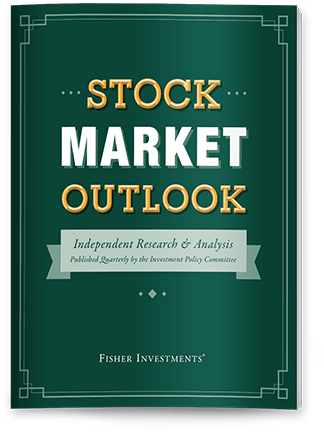Personal Wealth Management / Market Analysis
How Markets View the Newest Tariff Deadline and Dealmaking
Uncertainty lingers, but stocks are moving forward.
So here we are, winding down the week when the 90-day pause on the Trump administration’s reciprocal tariffs was set to end, and a lot has happened. There is a deal and talk of more deals, as well as new tariffs and new deadlines. Overall, tariffs remain higher than they entered the year but also below worst-case expectations (Brazil aside). And, while uncertainty lingers, markets are gradually gaining clarity. And most importantly, markets are increasingly moving on from the day-to-day news flow, doing their day job of pricing in the next 3 – 30 months.
The new deal, which follows modest deals with the UK and China, is with Vietnam. It formalizes a 20% tariff on Vietnamese goods—down from the 46% threatened on Liberation Day—while removing Vietnam’s tariffs on all US goods. It also stipulates goods transshipped through Vietnam will face a 40% rate, but it isn’t clear how transshipping is defined in this context or how it would be enforced. Depending on the specifics, this may create a path for other countries with high tariffs to reduce them by routing goods through Vietnam, especially if their tariffs end up exceeding 40% as China’s did earlier this year. But all in, while the new tariffs on Vietnamese goods are higher than they were on April 1, they are lower than what everyone feared on April 2. For markets, which move most on the gap between reality and expectations, that seems to be enough—particularly since simply knowing the tariff rates helps everyone plan and move forward.
As for other trading partners, based on the flurry of announcements posted on President Donald Trump’s Truth Social account, higher tariffs are coming if trade deals aren’t reached by August 1—a deadline whose stickiness the administration seems divided over. Exhibit 1 rounds up the lot announced thus far.
Exhibit 1: New Reciprocal Tariff Rates

Source: White House and Reuters, as of 7/10/2025.
You might notice the EU isn’t on this list. Trump has alluded to threatening new tariff rates, but negotiations on a deal are reportedly quite far along, so we may not get to that point. However, he did threaten a 200% tariff on pharmaceutical products, which happen to be a key export from the EU to the US. He also threatened a 50% levy on copper. So the ups and downs continue.
Time will tell if any of these actually take effect. Japan has held several rounds of talks, but auto tariffs are reportedly a stumbling block. While that appears to be a stalemate for now, Korea is stepping up talks, with auto and steel tariffs key issues. Other nations are also negotiating. Time will tell how it all shakes out.
Overall, though, things are mostly going better than the world expected in early April. The two counterpoints are Japan, whose new tariff rate is 1 percentage point higher than Liberation Day’s 24%, and Brazil. Yet there are many questions as to whether that Brazilian rate would withstand court challenges—in addition to the broader challenge to reciprocal and blanket tariffs already working its way through the courts. Without wading into the politics, Trump cited a domestic Brazilian political issue as the reason for the higher rate, which to the naked eye doesn’t seem consistent with the national security or currency manipulation grounds the president can base unilateral tariffs on. Particularly when you consider that the US runs a trade surplus with Brazil. A successful court challenge could render this and Brazil’s threatened retaliation moot.
Given the lingering question marks, it is fair to say the uncertainty continues. Clarity is coming very gradually, with ups and downs, fits and starts. That makes it difficult for businesses to plan and invest. And while kicking the can on the July 9 deadline offers temporary relief to US businesses and consumers, it also pushes out clarity’s arrival. Yet the mere existence of headwinds doesn’t mean stocks do badly. Yet as of Thursday’s close, the S&P 500 is up slightly on the week. We aren’t getting the big swings up and down that we got with early April’s announcements. The shock factor seems to have worn off, as has the sharp myopia. It looks to us like markets are gazing further out, taking tariffs in stride as only one of many variables affecting growth and earnings.
For stocks, this is fine. Probably better for stocks outside the US, given the simple truth, repeatedly proven throughout history, that tariffs hurt the imposer more than a target by redirecting spending and impeding the flow of capital. Because Europe and Asia haven’t broadly retaliated (a plus), they haven’t thus hamstrung their own economies. Instead, they seem to be focused on freeing trade with one another, which is a tailwind and long-term positive. All this, we think, feeds into non-US stocks’ big outperformance this year, which likely continues.
If you would like to contact the editors responsible for this article, please message MarketMinder directly.
*The content contained in this article represents only the opinions and viewpoints of the Fisher Investments editorial staff.
Get a weekly roundup of our market insights
Sign up for our weekly e-mail newsletter.

You Imagine Your Future. We Help You Get There.
Are you ready to start your journey to a better financial future?

Where Might the Market Go Next?
Confidently tackle the market’s ups and downs with independent research and analysis that tells you where we think stocks are headed—and why.





